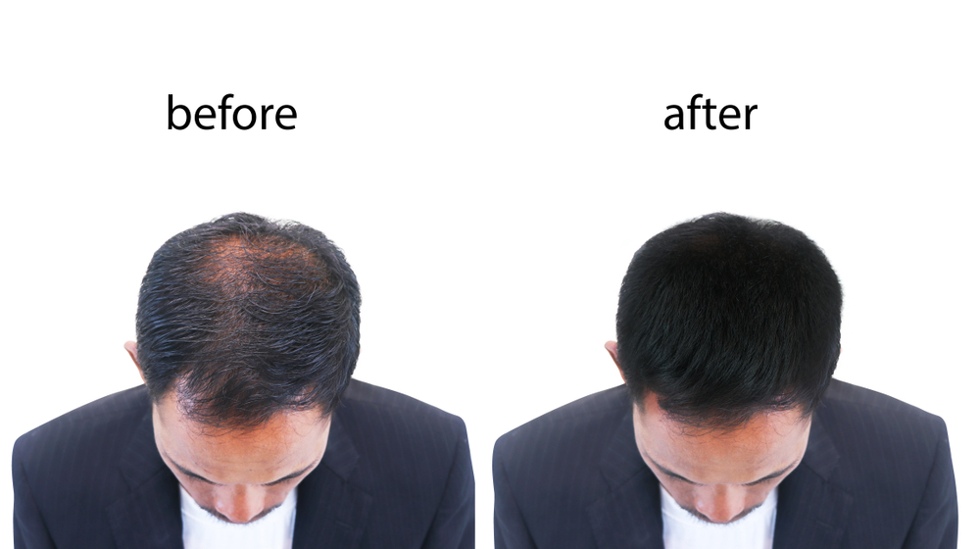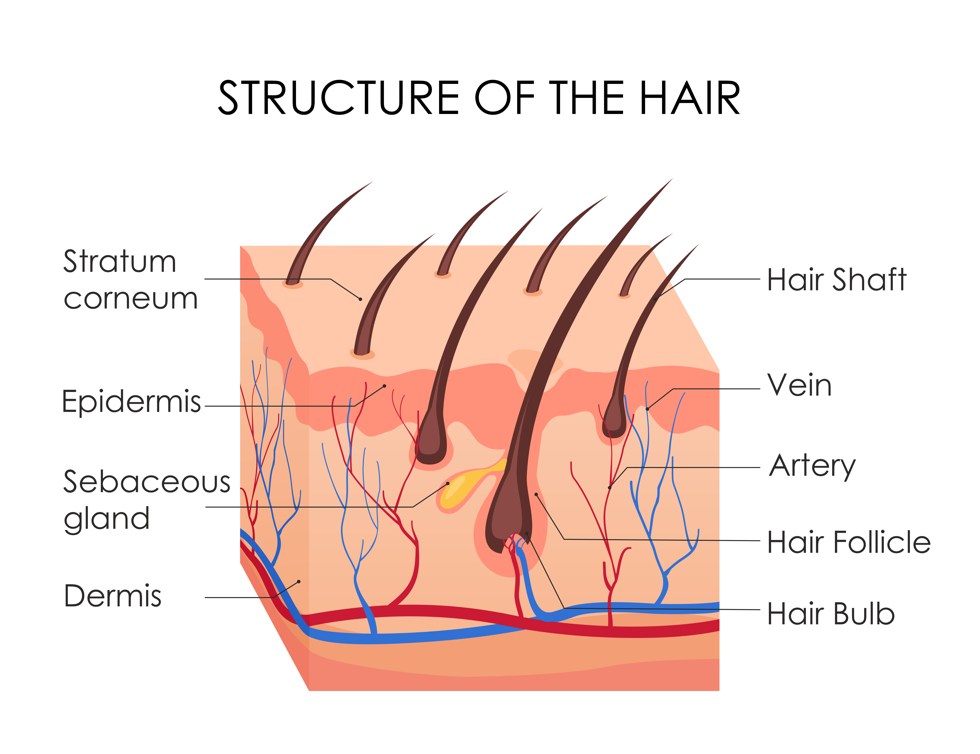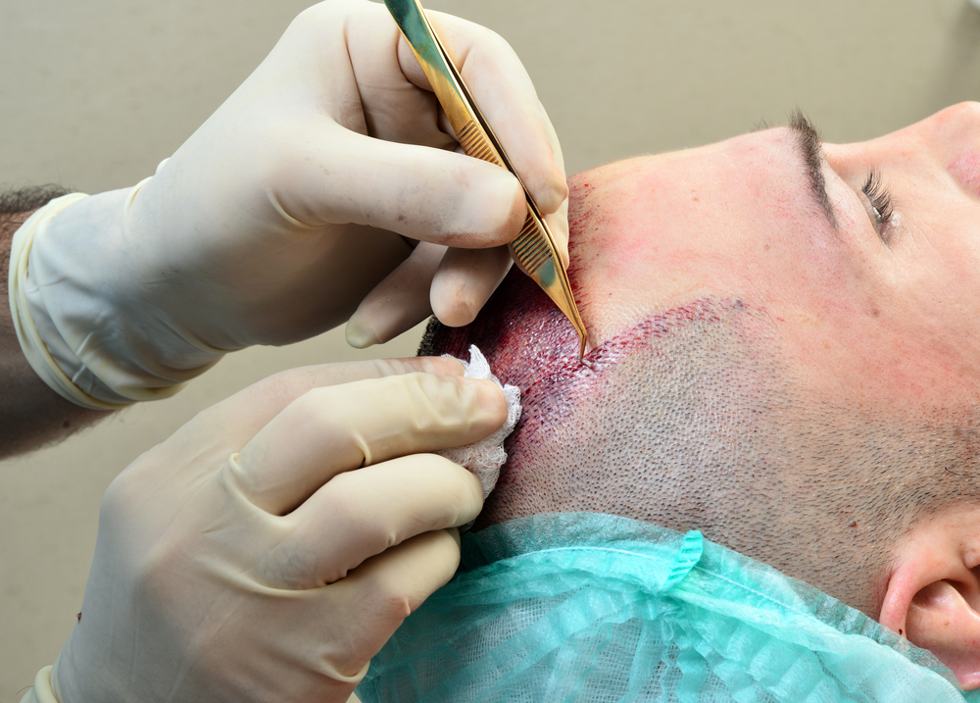Hair Transplant Surgery
Published on: 7 May 2019, 3:25 p.m.
Mr Debashis Ghosh
NHS Consultant
GMC Number: 4657664

Medically reviewed by a licensed NHS consultant
Last updated: 15/08/2019Get Free & Simple Pricing, Procedure & After Care Information from a Licensed Consultant Now
 Photo credit: chairoij / Shutterstock
Photo credit: chairoij / Shutterstock
A hair transplant is a cosmetic procedure to move hair from an area unaffected by hair loss to another area that is subject to thinning or baldness. It is most common for people who suffer with androgenetic alopecia or scarring from an injury or burns. However, it is not suitable for other types of hair loss, such as alopecia areata.
Read on to find out more about hair transplants and whether it is the right option to treat your hair loss.
- The procedure
- Hair transplant length
- Hair transplant recovery time
- Side effects of a hair transplant
- The results of a hair transplant
- Hair transplant cost
- Where to get a hair transplant
- Frequently asked questions (FAQs)
What does the hair transplant procedure entail?
The hair transplant is typically carried out under local anaesthetic and sedation. Typically it takes one full day to complete the procedure, but an overnight stay is not usually needed. If your hair transplant is covering a large area, you might need to have two or three sessions a few months apart.
There are two main ways to carry out this procedure:
Follicular unit transplantation (FUT / strip method) 
- A strip of skin is removed from the back and sides of the head.
- This strip is divided into individual hair grafts (each containing around 2 hairs).
- They are placed into tiny incisions on the scalp to grow.
- The wound at the back of the head is closed with stitches.
Follicular unit extraction (FUE)
- This procedure requires the head to be shaved before beginning.
- A special punch device is used to directly remove grafts of hair individually.
- These grafts are placed into tiny incisions on the scalp.
The hair transplant procedure shouldn’t feel painful, but if you feel any discomfort afterwards your nurse will be able to prescribe pain relief.
Photo credit: art4stock / Shutterstock
If you are facing hair loss, there are some other non-invasive methods for preserving and recovering your hair, such as clinically proved hair loss medications.
These alternatives include:
- Minoxidil
This is an over-the-counter treatment which doesn’t require a prescription and comes as a foam or liquid that you can massage into your scalp. It also goes by the name Rogaine or Regaine.
- Finasteride
This is a pill which is prescription-only. You will have to visit your GP to get this medication, although some pharmacies will include a free private prescription in the sale cost. The medication is also sold under the brand name Propecia.
- Hair loss shampoos/conditioner
Purchasing special shampoos and conditioners are a very form of hair loss treatment as they often don’t have much effect on your hair. Instead, they may make your hair temporarily thicker.
- ATP marking
Advanced Tricho Pigmentation marking, also known as ATP marking, is a minimally invasive technique that tattoos the appearance of closely shaved hair onto the scalp. This is ideal for people who may not be suitable for a hair transplant. The ATP ink usually lasts around six years and the procedure costs between £1,000 to £3,000.
How long does a hair transplant last?
With the normal caveat that everyone is different, most people who undergo FUE and FUT hair transplants are happy with the outcome. The success will largely depend on how many good follicles you have left, how big a recipient area you want to cover, and the skill of the hair transplant surgeon - which underlines how important it is to do your research on hair transplant clinics and getting their predictions for the outcome. As a result, the transplant is not always guaranteed to last forever, but it will probably last a very long time.
However, it is possible for a hair transplant to fail. In some instances, your body may reject the new hair follicles resulting in the lack of new hair growth. This is a rare occurence. In this situation, you may want to try other transplant options instead.
If you were given a sedative during your hair transplant, you are unable to drive home as this can impair your judgement. It is advisable to not drive for at least 24 hours after your procedure to ensure the sedation has worn off.
After a few days, any bandages can normally be removed. If you have had a FUT procedure, at this point it is possible to return back to work and everyday duties as your head has not been shaved (the operation is not as noticeable). If you work in a job which requires any kind of exercise or heavy lifting, it is advisable to book longer time off work to allow the newly transplanted grafts time to secure into their new place.
Photo credit: halitomer / Shutterstock
After 14 days any non-dissolvable stitches can be removed, and you should be able to return to your normal hair car routine. After a few weeks, you should expect to see your transplanted hair fall out – this is nothing to be alarmed about. In around six months’ time, the hair will start to grow back. Full results will be seen in 12 to 18 months.
Side effects of a hair transplant
After any medical procedure, it is common to expect some side effects. Some of these side effects include:
- a tight, achy and swollen scalp
- temporary scabbing on the site of the transplant
- scarring
Other complications in the procedure include the following:
- excessive bleeding of the scalp
- infection
- an allergic reaction to the anaesthetic or sedation
The results of a hair transplant
Two to three weeks after surgery you will notice the transplanted hair will fall out. Do not be alarmed as this is normal and you should see new hair growth in the area within a few months (usually around the four-month mark). Most people see 60% of new hair growth after around six to 9 months, and the full effect of the transplant after a year.
It is possible that the transplanted follicles will themselves eventually begin to shrink and produce smaller hairs, in which case another transplant procedure may be an option.
How much does a hair transplant cost?
A hair transplant in the UK can cost anything between £1,000 and £30,000. The price is entirely dependent on how much hair you have loss, the type of procedure you go with, and the clinic you choose. It is important to conduct thorough research to find the best option for you both physically and financially.
Where to get a hair transplant?
Personal recommendation is one of the best ways to ensure you will be getting the correct treatment that is worth every penny. If you don't know anyone who has had a hair transplant, as with any other treatment, it is important to do thorough research. A good place to start is with the International Alliance of Hair Restoration Surgeons, which gives you a list of qualified, highly-esteemed surgeons.
If you are looking at clinics, it is important to check out the company before getting in touch. Look on their website for "before and after" shots and look online for any reviews - both on their website and Google, to get a clear picture. Once you are happy with their work, get in touch and ask the surgeon some questions, such as "how many hair transplant operations they have performed?"
Photo credit: Amanita Silvicora / Shutterstock
Frequently asked questions (FAQs)
- Does a hair transplant hurt?
The operation will be painless, but you may feel some discomfort during the healing process. Of the two procedures, FUT strip surgery is more invasive, which means it’s likely to be a bit more than the FUE procedure. The discomfort should be treatable with standard over-the-counter painkillers.
- When to get a hair transplant?
When getting a hair transplant, you must take into account the healing process. It is advisable to have 7 to 14 days off of work to rest and to allow the area to heal, so it is best not to get a transplant during a busy work period.
You might want to time your transplant to coincide with your summer holiday. However, it is important to remember not to swim for the first 14 days after treatment. Therefore, if you are planning a summer beach holiday, bear this in mind. This doesn’t mean you shouldn’t go on holiday after a transplant. Rest and recuperation should be on the cards for a week after your treatment, so taking a nice relaxing break for a week would work perfectly, such as a winter getaway in a cottage, or a city break in the summer.
- Will a hair transplant leave a scar?
Follicular unit extraction (FUE)surgery shouldn’t leave a scar, so if you want to keep your hair short then it’s the better option of the two types. Follicular unit transplantation (FUT) surgery is likely to leave a scar on the donor site, although it is often able to be hidden under medium-length hair.
